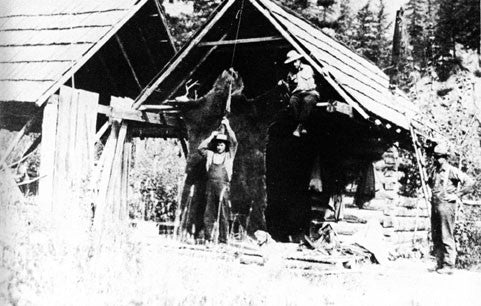





Ruffles on my Longjohns
Details
By: Edwards, Isabel
ISBN: 0-88839-102-1
Binding: Trade Paper
Size: 8.5" X 5.5"
Pages: 297
Photos: 32
Illustrations: 33
Publication Date: 2008
Description
PR Highlights: A Story of A Pioneering Woman.
PHOTO Highlights: 35 b/w photos in the middle of the book.
Description: Autobiographical account of a young couple's adventures homesteading in the Canadian wilderness. Isabel Edwards was in her early twenties when she and her husband Earle began homesteading in British Columbia's remote Bella Coola Valley. What was to be one winter spent in the Northern coastal mountains has become almost fifty years. Witty, whimsical, this is a firsthand account of homesteading in the remote Bella Coola Valley. For a woman in a world of men, isolation had a very special meaning. She coped - lovingly, laughingly - and regales the reader with her memories.
Author Biography
Book Reviews
I listened to my mother’s stories of growing up in the town of Ocean Falls and her and her friends’ expeditions into the surrounding hills and valleys. I wondered about the homesteaders who settled in the valley to the east and was delighted to find, at a second-hand book sale, Isobel Edwards’ book, Ruffles on My Longjohns, where she talks about her experiences living in the Bella Coola Valley. When Isobel and her husband, Earle, set out from Oregon in early September 1932 to spend the winter helping Earle’s brother with the trapping, she had no idea the valley would be their home for almost fifty years. There weren’t many men living along the river in those days, even fewer women, and her early years in Victoria hadn’t prepared her for life in the bush. Earle had chosen to make the trek in from the Interior rather than go by boat and they had to transport all their belongings by a hastily built raft down the river and by horse on the trails.
Isobel’s matter of fact way of telling a story coupled with a sense of humour shows both the challenges faced and the sense of satisfaction in overcoming them.
Isobel’s descriptions show us the beauty and solitude of Atnarko and Lonesome Lake, the snow line making its way down the mountain side, the river rising and spilling over the fields. We get to know the four men who live in the valley and the way they cope with their loneliness and isolation, the “Indians”, whose territory it is, who are regular visitors as they travel along the rivers and streams. We learn about the animals, domestic and wild, that are integral to the settlers’ existence and about how fishing supplements their farming income giving them the cash to buy staples. When Isobel goes out with Earle on the little sailing gillnetter they are towed to the grounds by BC Packers. Before they leave she realizes she is the only woman in fishing garb; the others on the dock are all in dresses and down to see the men off. She soon realizes why they don’t go fishing.
This firsthand account is full of such tales. This book is a delight to read as it brings to life a time along the rivers between Tatla Lake and the coast before the road was pushed through in 1955.